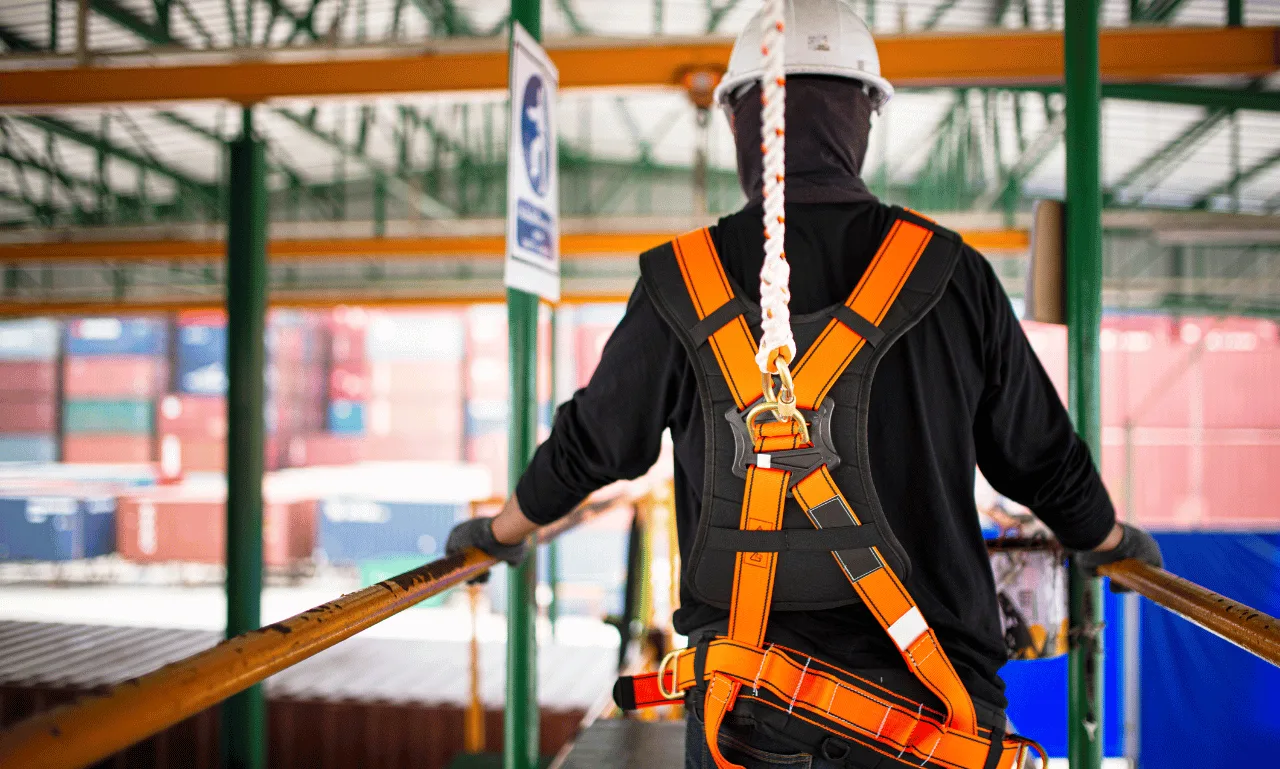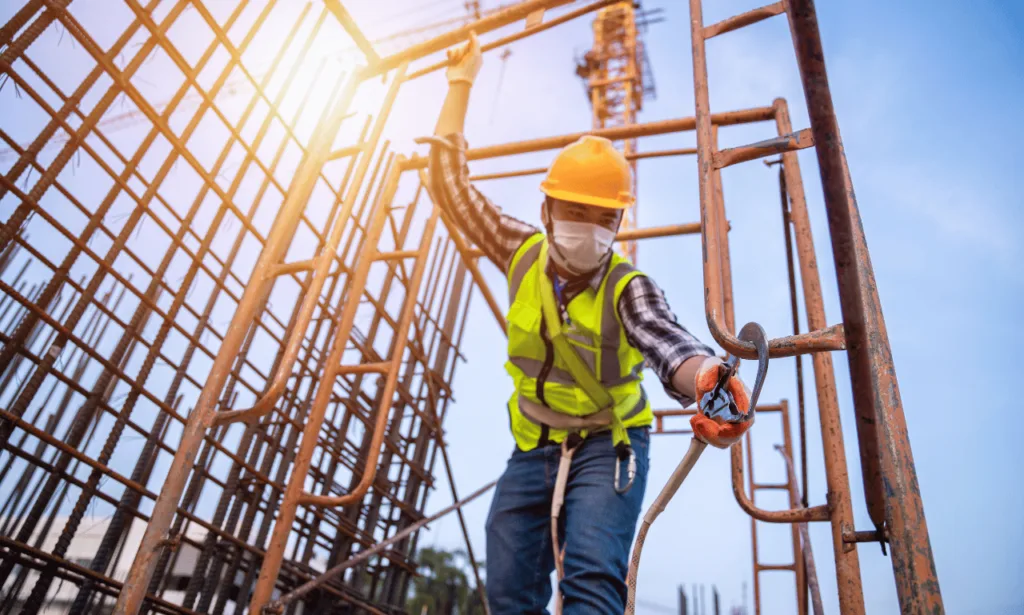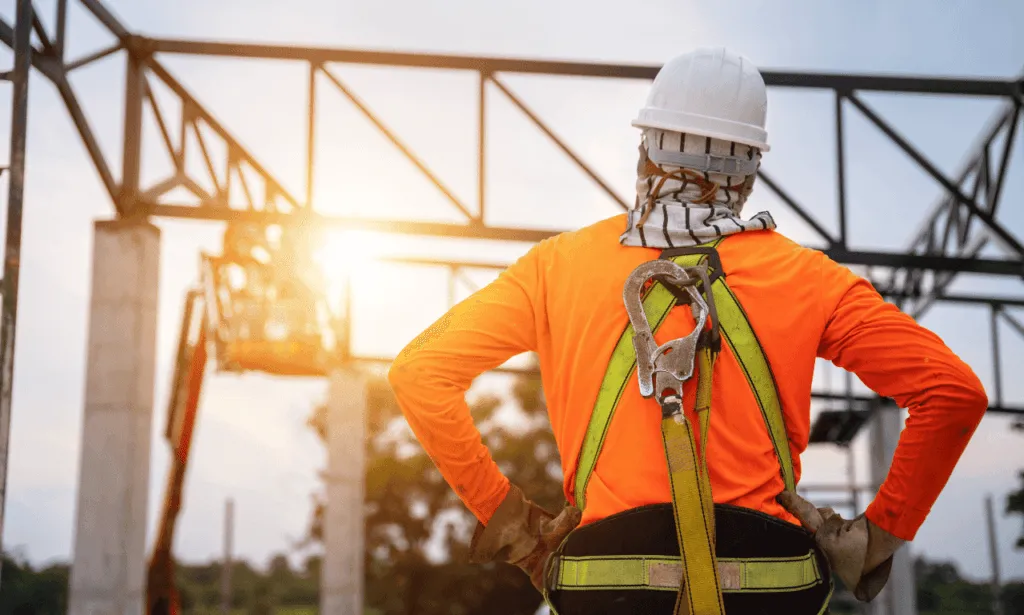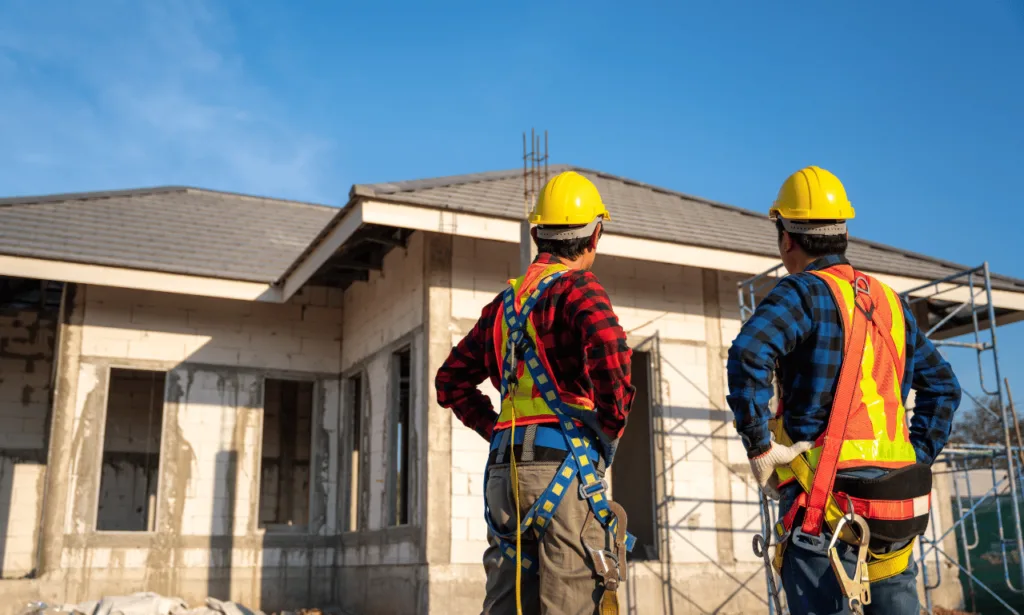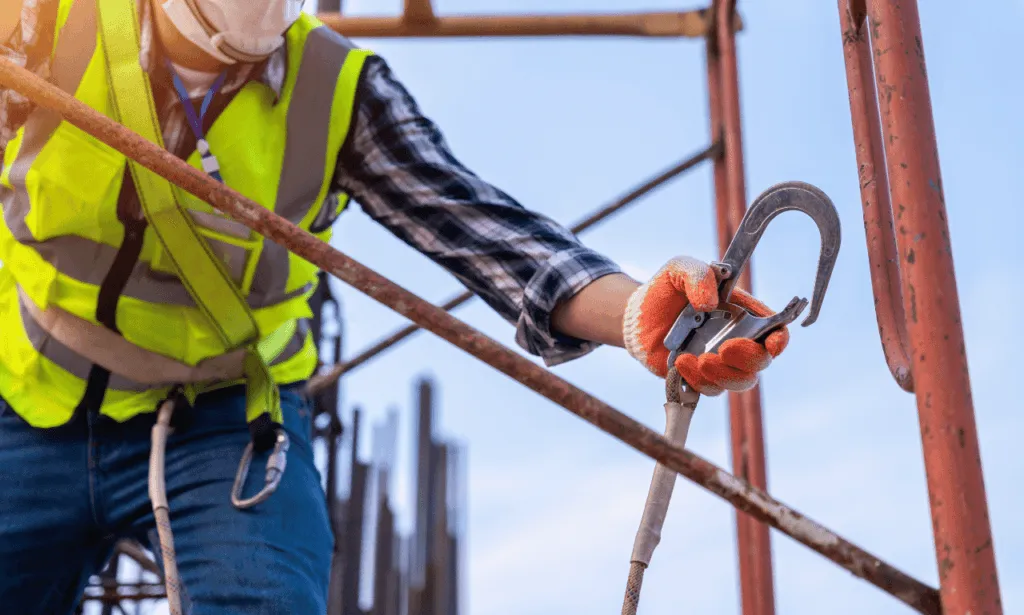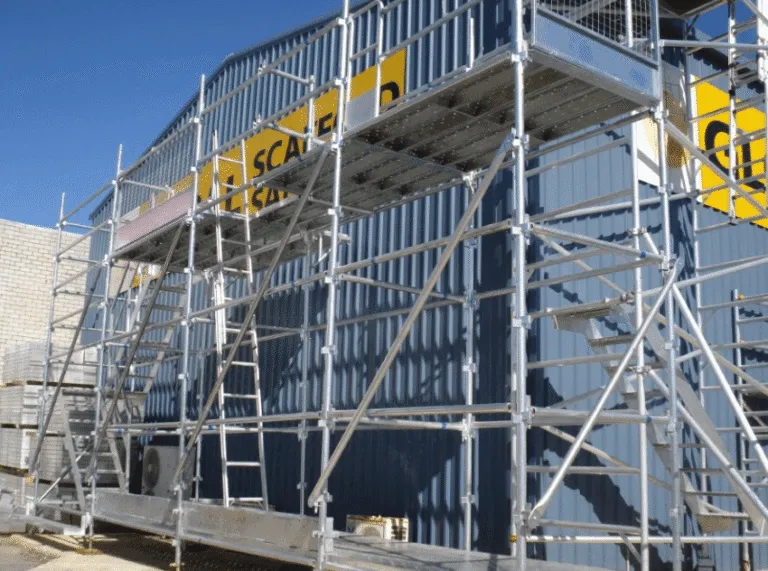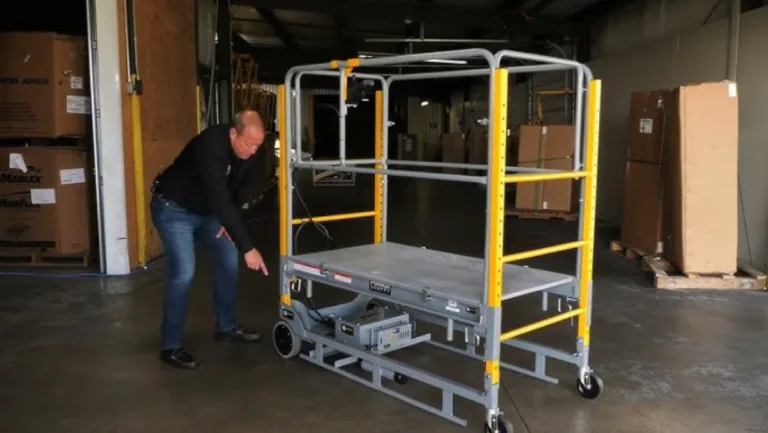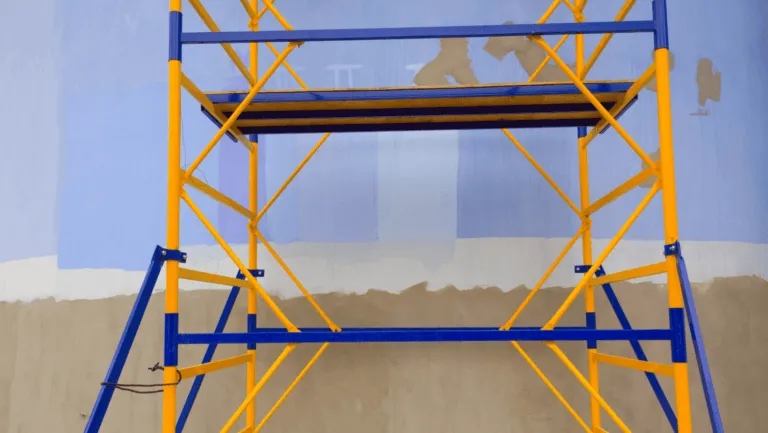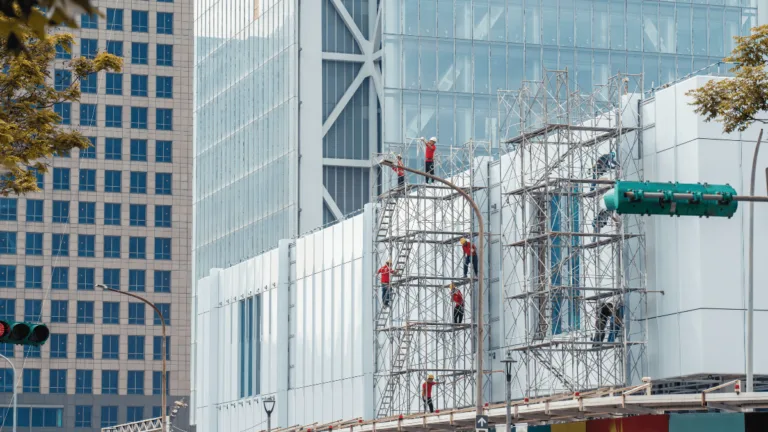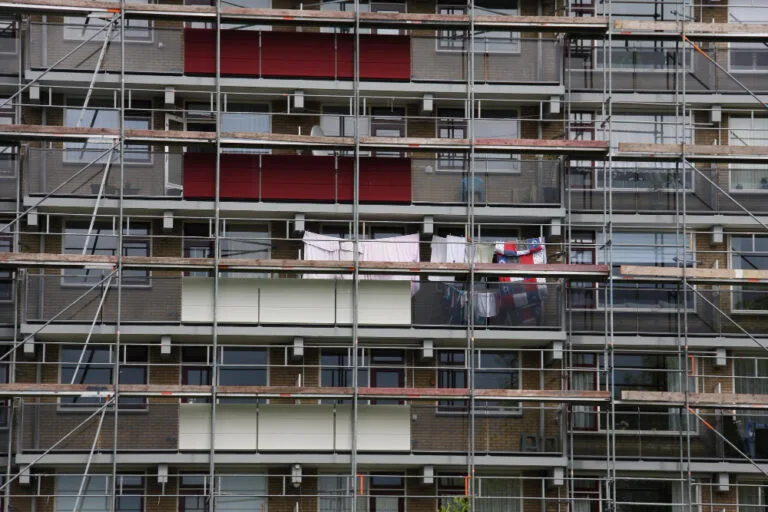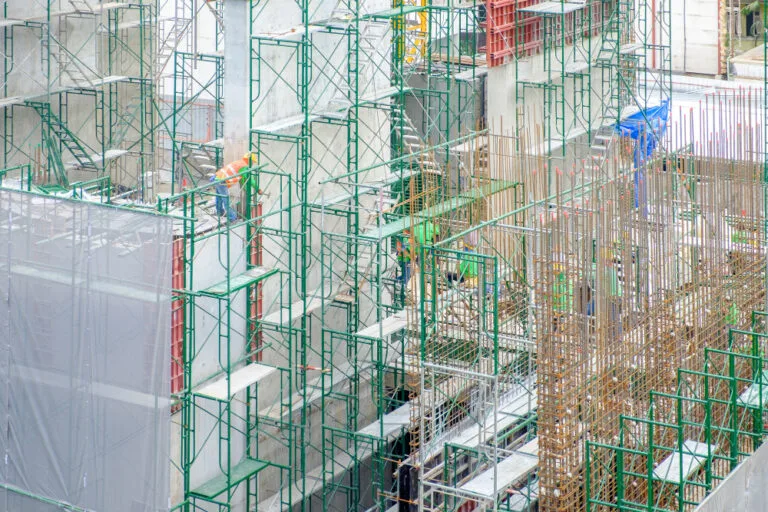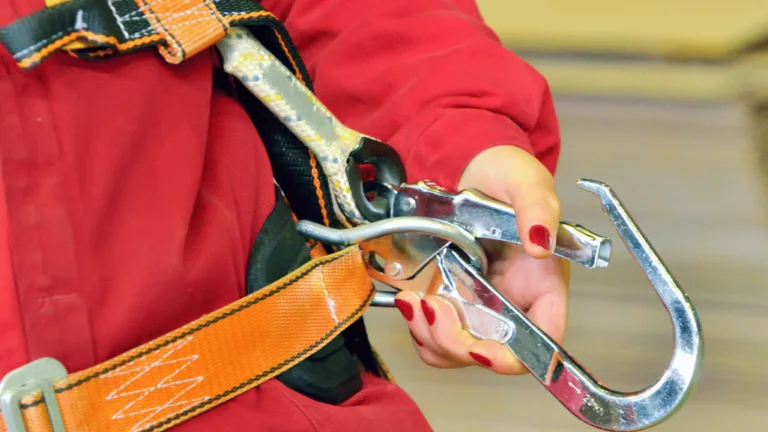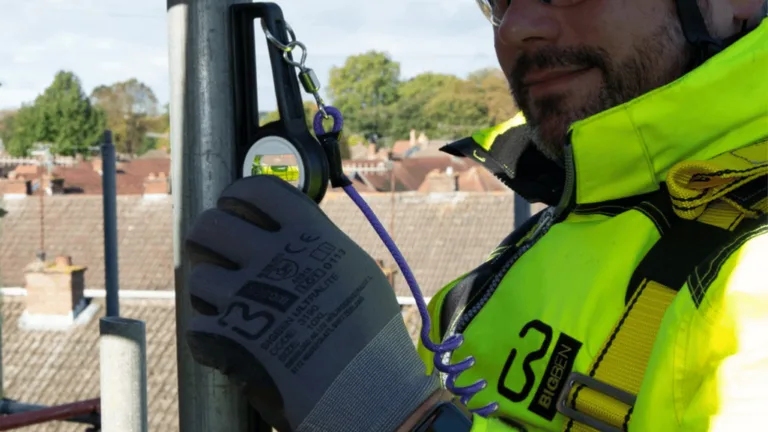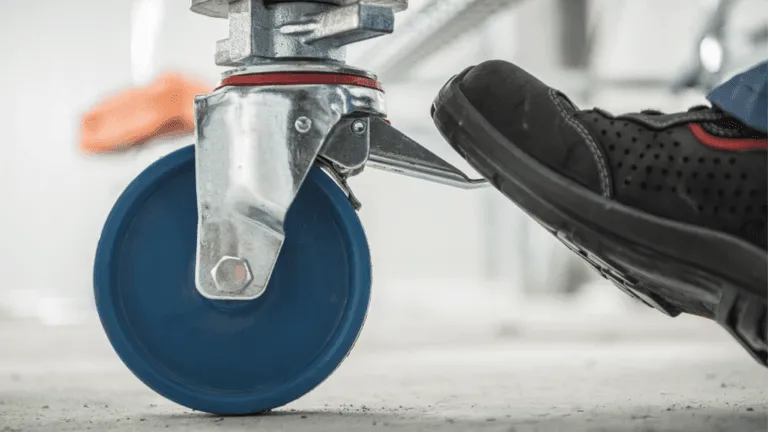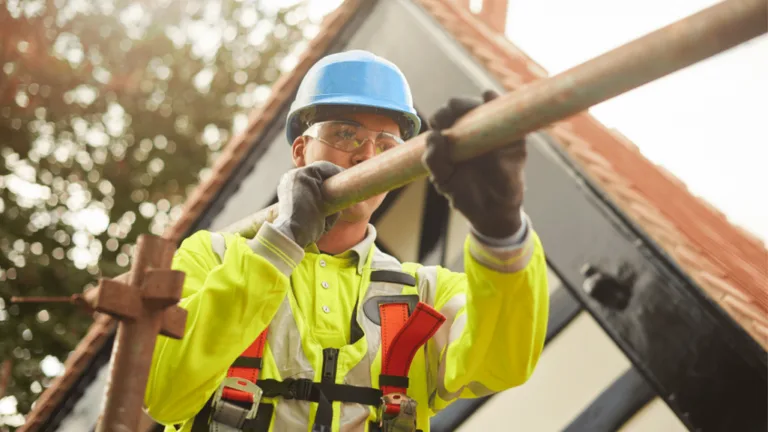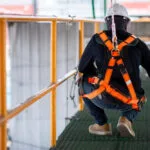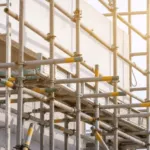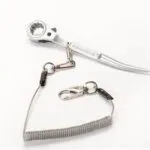Phone:
(+65)8319-0742
Fall protection safety is key to keeping workplaces safe. Falls are the top cause of injuries on construction sites, with 40% leading to injuries and 39% to deaths. Using effective fall protection can save lives and prevent serious injuries. It also cuts down on the costs of accidents, like medical bills, compensation claims, and legal fees.
Fall protection keeps workers safe from falling off high places, such as platforms or holes in floors and walls. OSHA says businesses should have a Fall Protection Program if workers are at certain heights. This includes 4 ft in general industry, 5 ft in shipyards, 6 ft in construction, and 8 ft in longshoring. By focusing on fall prevention and worker safety, companies can make their workplaces safer and lower the risk of accidents.
Key Takeaways
- Fall protection safety is crucial for ensuring workplace security and preventing injuries and fatalities.
- Implementing effective fall protection measures can save lives, prevent injuries, and reduce financial costs associated with workplace accidents.
- Fall protection encompasses safety systems that prevent workers from falling off elevated workstations, overhead platforms, or through holes in floors and walls.
- OSHA recommends adopting a Fall Protection Program for industries and businesses where individuals work at specific elevations.
- Prioritizing fall prevention and worker safety helps create a secure work environment and minimizes the risk of accidents.
Understanding Fall Protection
Fall protection is key to keeping workers safe, especially in jobs that involve heights. It includes equipment, systems, and practices to lower fall risks. By using these measures, employers can make workplaces safer and avoid serious accidents.
What is Fall Protection?
Fall protection stops workers from falling off high places or getting hit by falling objects. It uses gear like harnesses and guardrails to keep workers safe. It also means teaching workers how to use this equipment and follow safety rules.
OSHA says fall protection is needed for workers above certain heights in many jobs:
| Industry | Height Requirement |
|---|---|
| Construction | 6 feet |
| General Industry | 4 feet |
| Longshoring | 8 feet |
| Shipyards | 5 feet |
| Scaffolding | 10 feet |
Companies can pick between active and passive fall protection systems. Active systems need workers to use the equipment, like wearing a harness. Passive systems, like guardrails, protect without needing worker action.
Importance of Fall Protection in the Workplace
Fall protection is very important. In 2019, 615 people died from falls, and 48,040 got hurt badly enough to miss work. These numbers show how crucial fall protection is for workplace safety and accident prevention.
Using fall protection saves lives, prevents injuries, and boosts productivity. It also saves money and avoids delays. Jobs like roofing and steel work have high fall risks. By focusing on fall protection, employers can keep their workers safe and avoid accidents.
Fall protection is not just about following rules; it’s about caring for our workers. By making safety a priority and using good fall protection, we can make our workplaces safer for everyone.
In summary, knowing about fall protection is vital for workplace safety and injury prevention. By following OSHA rules, choosing the right fall protection systems, and training workers well, employers can reduce fall risks and ensure a safer work environment.
Fall Protection Regulations and Standards
Keeping workers safe at heights is a big deal for companies in many fields. To cut down fall risks and prevent injuries, following fall protection rules is key. The Occupational Safety and Health Administration (OSHA) and the American National Standards Institute (ANSI) set these guidelines.
OSHA Fall Protection Requirements
OSHA is the main agency for workplace safety. It has specific rules for fall protection based on the job and height. These rules aim to protect workers from falls, a leading cause of death in construction.
In 2023, OSHA found 7,188 cases where fall protection was lacking. OSHA’s rules change based on the job and height. For example:
- Four feet in general industry workplaces
- Five feet in shipyards
- Six feet in the construction industry
- Eight feet in longshore operations
Employers must use fall protection when workers are at or above these heights. This includes protecting against falls through holes and near excavations. OSHA also has rules for ladders, like spacing and safety devices for fixed ladders over 24 feet.
ANSI Standards for Fall Protection
ANSI is a private group that helps create safety standards. While not law, these standards are trusted by many for better safety. ANSI’s fall protection standards cover the design and use of safety systems and gear.
Some important ANSI standards for fall protection are:
- ANSI Z359.1: Safety Requirements for Personal Fall Arrest Systems, Subsystems, and Components
- ANSI Z359.2: Minimum Requirements for a Comprehensive Managed Fall Protection Program
- ANSI Z359.3: Safety Requirements for Positioning and Travel Restraint Systems
- ANSI Z359.4: Safety Requirements for Assisted-Rescue and Self-Rescue Systems, Subsystems, and Components
Following these standards means fall protection gear meets high safety standards. Companies that follow ANSI show they care about worker safety and use the best fall protection methods.
| Year | Total Workplace Fatalities | Fatalities from Falls to Lower Levels | Fatalities from Slips, Trips, and Falls |
|---|---|---|---|
| 2022 | 5,486 | 700 | 865 |
By following OSHA and ANSI rules, employers can make workplaces safer. This reduces fall risks and keeps workers safe from injuries and deaths. It’s important to have good fall protection programs, the right equipment, and proper training.
Types of Fall Protection Systems
In the workplace, different fall protection systems are used to keep workers safe at heights. These systems are divided into passive and active fall protection. Each type has its own role in preventing falls and reducing injury risks. It’s important to choose the right system to keep the work area safe and follow safety rules.
Passive Fall Protection
Passive fall protection systems, like guardrails, safety nets, and covers, act as barriers against falls. They don’t need workers to do anything to work. Guardrails stop workers from falling off edges. Safety nets catch workers if they do fall.
Active Fall Protection
Active fall protection systems need workers to use them to work. These include personal fall arrest systems (PFAS), positioning device systems, and travel restraint systems. PFAS have a harness, a shock-absorbing lanyard, and an anchor point. Workers must wear and connect their PFAS to an anchor point to stop a fall.
Fall Arrest Systems
Fall arrest systems are key in active fall protection. They stop a fall in progress and reduce injury risks. These systems have a harness, a shock-absorbing lanyard, and an anchor point. They absorb the fall’s energy, limiting the impact on the worker’s body.
| Fall Protection System | Key Characteristics | Examples |
|---|---|---|
| Passive Fall Protection | Protects workers without requiring their active participation | Guardrails, safety nets, covers |
| Active Fall Protection | Requires active involvement and proper use by workers | Personal fall arrest systems, positioning device systems, travel restraint systems |
| Fall Arrest Systems | Designed to stop a fall in progress and minimize injury | Full-body harness, shock-absorbing lanyard, self-retracting lifeline, secure anchor point |
Choosing the right fall protection system depends on the work, the height, and the hazards. Knowing about different systems helps employers protect workers at heights. This reduces the risk of injuries and deaths at work.
Implementing a Fall Protection Program
Creating a fall protection program is key to keeping workplaces safe. It involves setting up procedures and guidelines for specific fall hazards. This way, employers can manage and reduce fall risks, making the workplace safer for everyone.
When making a fall protection program, think about your industry’s needs. It should cover the equipment and training for employees. You can use active, passive, or a mix of fall protection methods, based on your work and hazards.
The Fall Protection Hierarchy helps manage fall hazards. It ranks protection methods from best to least effective. The order is:
- Elimination of fall hazards
- Passive fall protection (e.g., guardrails, safety nets)
- Active fall protection (e.g., personal fall arrest systems)
- Administrative controls (e.g., safety procedures, warning signs)
“Falls are among the most common causes of serious work-related injuries and deaths. Employers must set up the workplace to prevent employees from falling off of overhead platforms, elevated work stations, or into holes in the floor and walls.” – Occupational Safety and Health Administration (OSHA)
Good fall protection programs also include regular checks and maintenance of equipment. They also need ongoing safety training for employees. This way, workers know about fall hazards and how to use protection systems, lowering the risk of falls.
| Industry | Fall Protection Requirements |
|---|---|
| General Industry | Fall protection required at heights of 4 feet or more above a lower level |
| Construction Industry | Fall protection required at heights of 6 feet or more above a lower level |
| Scaffolding (Construction) | Fall protection required at heights of 10 feet or more above a lower level |
In summary, setting up a fall protection program is vital for workplace safety. By following industry standards, using the right equipment, and training employees, employers can foster a safe work environment. This prioritizes the well-being of their workers.
Identifying Fall Hazards in the Workplace
Finding potential fall hazards is key to keeping workplaces safe. Falls are a big cause of injuries and deaths at work. In 2020, 805 workers died from falls. To lower these risks, it’s important to do detailed hazard assessments and use the right safety steps.
Conducting a Thorough Hazard Assessment
A good fall hazard assessment looks at the whole workplace to find risky spots. It checks places like manholes, skylights, and stairways. By spotting these dangers, employers can take steps to make the workplace safer.
It’s also important to think about the specific needs of each industry. For example, OSHA says workers in construction need protection at 6 feet or more. General industry workers need it at 4 feet or more. Making the assessment fit the work environment and following rules helps keep everyone safe.
Common Fall Hazards to Address
Many fall hazards can be found in different workplaces. These include:
- Unprotected edges and openings
- Unstable or slippery walking surfaces
- Inadequate or missing guardrails
- Unsecured ladders and scaffolding
- Cluttered or obstructed walkways
To fix these hazards, employers can use several safety measures. For example:
| Hazard | Control Measure |
|---|---|
| Unprotected edges and openings | Install guardrails, safety nets, or cover openings |
| Unstable or slippery walking surfaces | Provide slip-resistant flooring, regular maintenance, and proper footwear |
| Inadequate or missing guardrails | Install or repair guardrails that meet OSHA standards |
| Unsecured ladders and scaffolding | Ensure proper setup, inspection, and use of ladders and scaffolding |
| Cluttered or obstructed walkways | Implement regular housekeeping practices and maintain clear walkways |
By tackling these common fall hazards, employers can greatly reduce the chance of accidents. Regular safety checks, training, and reporting systems help spot and fix these dangers. This makes the workplace safer for everyone.
Selecting the Right Fall Protection Equipment
Choosing the right fall protection equipment is key to keeping workers safe and following the rules. Construction worker deaths from falls make up 42% of all fatalities. It’s vital to pick equipment that meets OSHA standards and offers enough protection. The right fall protection equipment is crucial for preventing accidents and saving lives when working at heights.
Harnesses and Lanyards
Harnesses and lanyards are essential for active fall protection. A well-fitting harness spreads out the force of a fall, reducing injury risk. Lanyards, which connect to an anchor point, must handle at least 3,000 pounds of force. They should also withstand twice the force needed to stop a fall.
Energy-absorbing lanyards, up to 2m long, help lessen the impact of a fall on the worker.
Anchor Points and Connectors
Anchor points are secure spots for fall protection systems. They must be able to handle more than 12kN to meet the NF EN 795 standard. Connectors, like carabiners and snap hooks, link the system’s parts together. It’s crucial to ensure all parts work well together for safety.
Guardrails and Safety Nets
Guardrails and safety nets offer passive fall protection. They don’t need worker action to work. OSHA requires railings and toe boards on floor holes and elevated platforms. Guardrails can greatly reduce fall incidents, especially on rooftops and scaffolds.
Safety nets, placed below the work area, catch workers if they fall.
| Fall Protection Equipment | Key Features | Standards |
|---|---|---|
| Harnesses | Distribute force across the body | ANSI Z359.11 |
| Lanyards | Withstand 3,000 lbs of force | ANSI Z359.13 |
| Anchor Points | Withstand force greater than 12kN | NF EN 795 |
| Guardrails | Prevent falls from elevated surfaces | OSHA 1926.502 |
| Safety Nets | Catch workers in case of a fall | ANSI A10.11 |
Choosing the right fall protection equipment needs careful thought. Consider the work environment, tasks, and safety standards. Quality, compliant equipment and proper use and maintenance create a safer workplace. This protects workers from the dangers of working at heights.
Fall Protection Safety Training
Fall protection training is key to keeping workplaces safe. It teaches workers about fall hazards and how to use safety gear. This training helps prevent injuries and saves lives. Comprehensive fall protection training is vital for understanding safety measures.
Educating Workers on Fall Hazards
Teaching workers about fall hazards is a main goal of fall protection training. It helps them spot and avoid dangers like unstable surfaces. Safety education should mix classroom learning with hands-on training.
OSHA rules say workers over 10 inches off the ground need protection. There are different levels of training, from basic to advanced. Tailored training ensures everyone knows their role in staying safe at heights.
Proper Use and Maintenance of Fall Protection Equipment
Fall protection training also covers how to use and maintain safety gear. Workers learn to wear harnesses right and check equipment for damage. Hands-on training makes sure they’re comfortable with their gear.
Keeping equipment in good shape is crucial. Training should stress the need for regular checks and cleaning. Employers must keep records of inspections and replacements to follow safety rules.
“Fall protection certification requires updated training and refresher courses every two years, costing approximately $49.00 per employee.”
Investing in fall protection training is smart. It builds a safe work culture and follows OSHA rules. By focusing on safety education, employers can reduce fall risks and make the workplace safer for everyone.
Maintaining and Inspecting Fall Protection Equipment
To keep fall protection equipment working well, regular checks are key. Workers should check their gear before each use for any damage. Employers also have a big role in making sure the equipment is safe and meets standards.
OSHA says lifelines, harnesses, and other gear should be checked by a trained person at least once a year. But, ANSI suggests checking all equipment every six months. This helps keep everything in good shape and safe to use.
Various standards, such as OSHA 1910.140 and 1926.502, ANSI Z359.14-2014, and CSA Z259.2.2, have specific inspection requirements, including removing impacted systems and components and inspecting before use.
Internationally, there are also rules for checking equipment. For example, CE EN365:2004 says gear should be checked before each use and by a trained person every year. In Australia and New Zealand, gear must be checked by a trained person before and after use, and every six months.
Keeping records of these checks is important. Many makers provide forms to help with this. Good care includes avoiding sharp edges, cleaning gently, and storing in a dry place.
- Keeping equipment away from sharp surfaces
- Cleaning with mild soap
- Storing in a dry place away from UV rays
- Hanging wet gear to dry naturally
| Standard | Inspection Frequency | Inspector |
|---|---|---|
| OSHA | Before each use and annually | User and Competent Person |
| ANSI | Before each use and every 6 months | User and Competent Person |
| CE EN365:2004 | Before each use and annually | User and Competent Person |
| AS/NZS 1891.4 | Before and after each use, and every 6 months | Height Safety Operator and Equipment Inspector |
It’s vital to have a plan for checking and caring for fall protection gear. This means training workers, talking about safety often, and doing safety checks regularly. By focusing on maintenance and inspections, employers can keep their workplaces safe for everyone.
Best Practices for Fall Protection Safety
To keep workplaces safe, organizations must follow fall protection best practices. These include using fall protection gear right and building a strong safety culture. Regular safety checks are also key for ongoing improvement.
Creating a safety-first culture is vital. Leaders must show strong commitment, and all employees need to be involved. Open talks about safety and how to prevent falls are essential. This way, everyone knows safety is a top priority.
Conducting Regular Safety Audits
Regular safety audits are crucial for maintaining safety standards. They help spot fall hazards, check if current safety steps work, and make sure rules are followed. By finding and fixing problems early, workplaces can stay safe and meet changing rules.
Embracing Continuous Improvement
Fall protection safety never stops. It’s a journey that needs constant effort. Organizations should always look to improve their safety plans. This includes using new safety tech and training employees well.
By always looking to get better, workplaces can be safer. This reduces the chance of falls and keeps everyone protected.

